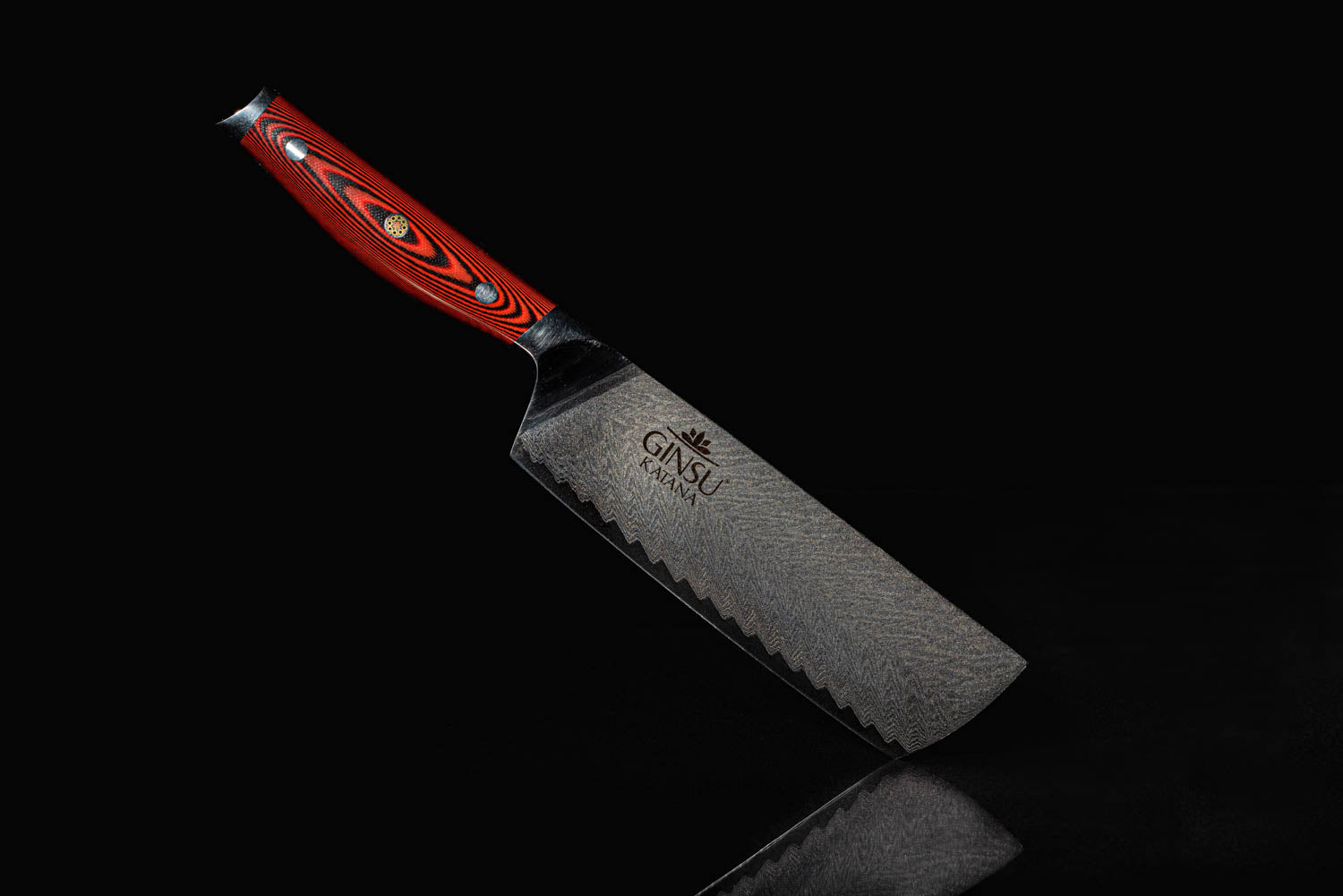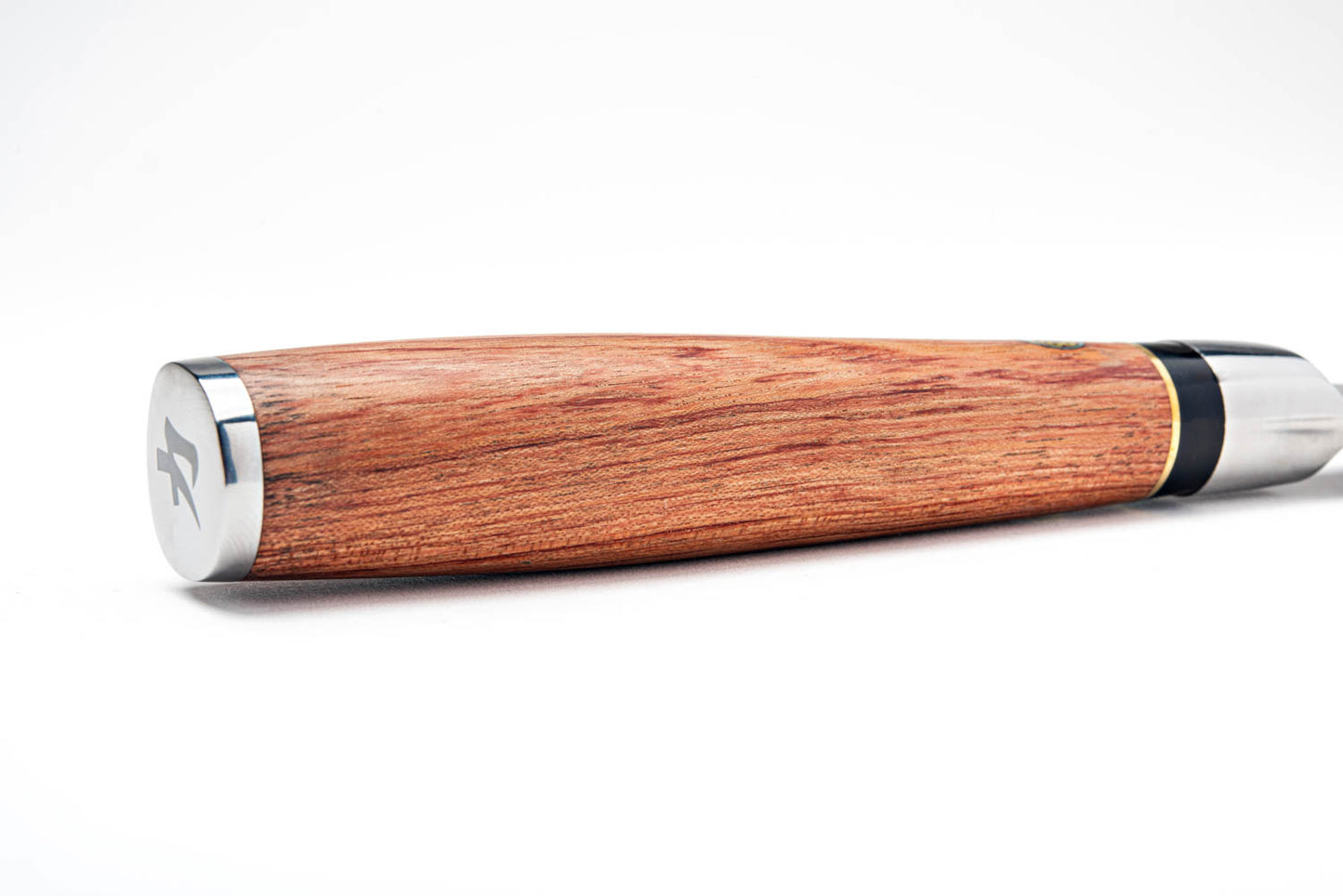
intention
Every GINSU KATANA knife was built with intention and purpose. Learn how we bring both beauty and function to the kitchen with our knives all while staying true to the essence of Japanese tradition.

HISTORY OF JAPANESE KNIVES
The name GINSU KATANA derives from century old techniques developed by highly skilled craftsmen who created KATANA. Like the samurai who wielded these tools of art, we now find ourselves using these same skills hundreds of years later to develop top-quality Japanese kitchen knives. The shift to knife making began when the production and possession of Katanas was banned. This led the skilled craftsmen to adapt their skills into the production and crafting of kitchen knives.
JAPANESE STEEL 420J2
JAPANESE STEEL 440A
JAPANESE AUS 10 DAMASCUS

Japanese Style - Single Bevel
Single bevel knives are favored in specific types of cooking, such as Japanese, and offer a key advantage – they are extremely sharp. This is due to the fact they only need to be honed on one side making it is easier to create a much smaller, sharper, angle. This allows precision slicing, dicing and cutting which is essential in Japanese cuisine, particularly when crafting sushi. A single bevel knife also allows the chef to make long, unbroken and wafer-like cuts, which is very important when preparing certain Japanese vegetables. It is difficult to achieve unbroken cuts such as these with a double-bevel knife.

Western Style - Double Bevel
Most European knives are double-beveled which come in a variety of edge styles. The most common is a V-shape double bevel, however there are also compound double-layered V edge and convex shapes. Double bevel blades are most commonly used for general slicing, chopping, and dicing (rather than intricate cutting which is better suited for its counterpart, the single bevel blade). Double bevel knives are also especially useful for both left- and right-handed individuals.
Making up nearly half of the entire knife, the handle is what dictates the different grips, durability, and overall comfort of the tool. Whether you’re slicing vegetables or preparing a five-star meal for your family, it’s important to have a knife handle that’s the right fit. The material used to make a knife handle plays a big part in how comfortable, functional, and easy it is to use in the kitchen.


















